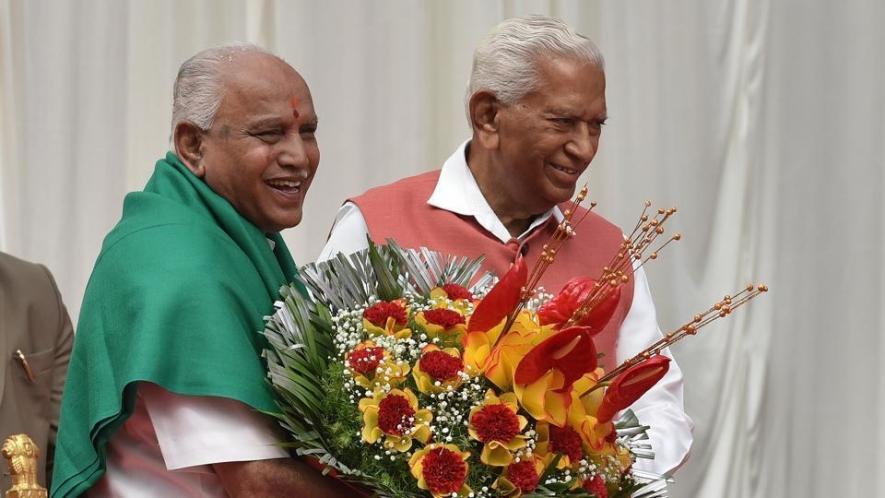The Supreme Court has Declined to Comment on Karnataka Governor's Decision

Image Courtesy: Hindustan Times
The Supreme Court of India heard petitions against the Karnataka Governor's decision to invite B. S. Yeddyurappa to form the government in the state. In its Order today, the Court has directed that a floor test be conducted at 4 PM tomorrow, in which Yeddyurappa would have to prove his party's majority. The Court had refused to stay his oath-taking ceremony yesterday after a rare midnight hearing. However, the issue that was not touched upon was the departure from the norm that the Court had earlier upheld in Chandrakant Kavlekar v. Union of India. This departure has spurred furious efforts by the Congress in Goa, Manipur, and Meghalaya to prove their majority.
In all three states, the Congress had emerged as the single largest party, yet did not hold a clear majority of the seats. The result was that coalitions, including the BJP, laid claim to form the respective governments. Concerning what occurred in Goa, a Congress party member, Chandrakant Kavlekar, petitioned the Supreme Court against the Governor's decision. The Court, however, did not specifically set to rest the question of who should be called. The Order passed by the Court had only directed that a floor test conducted to decide whether the government had the requisite numbers. The problem, as pointed out on LiveLaw, was that the Court had not laid to rest who should be called to form the government in such circumstances. The 'Goa model' was replicated in both Manipur and Meghalaya. Thus, it would appear that a post-poll coalition should surpass the party with the single largest majority as a norm. However, in the case of Karnataka, the post-poll coalition was passed up for the party with the single largest majority.
The current authority – despite being non-binding – is the recommendation of the Sarkaria Commission. According to the report, the order of preference for who should form the government is;
- An alliance of parties that was formed prior to the Elections.
- The largest single party staking a claim to form the government with the support of others, including “independents.”
- A post-electoral coalition of parties, with all the partners in the coalition joining the Government.
- A post-electoral alliance of parties, with some of the parties in the alliance forming a Government and the remaining parties, including “independents” supporting the Government from outside.
This order of preference arises only when there is no party with an absolute majority in the house. The disconcerting part of the Commission's report is that they recommended that the Chief Minister, as identified by the Governor, should prove the party's majority within 30 days of taking office. This time period is quite large, and it is possible that it would result in horse trading and other unsavoury deals. Luckily the Court directed the vote of confidence to be conducted the next day.
In the case of Karnataka, the only alliance which exists is a post-poll alliance between the Congress, BSP and the JD(S). The BJP for their part have claimed that they have the numbers despite not holding an absolute majority. This is an interesting claim since it is only the Congress, BJP and JD(S) who have the numbers required to form any combination of government. The BSP, Karnataka Pragnyavantha Janatha Party (KPJP), and an independents got one seat each. Even if the BJP were to form an alliance with the KPJP and the independent, they would not have the requisite numbers. However, the party claims that they do.
The Punchhi Commission reiterated the recommendation of the Sarkaria Commission. However, they added that “[i]n light of the increased dependence on party alliances, clarity with regard to the role of the Governor in his invitation to form a government assumes great significance. If specific guidelines are not laid down with regard to determining the claims of a post-poll alliance, it would result in ambiguity and the Governor would follow the established convention of inviting the single largest party to form the Government. In cases of narrow majorities, there are no uniformly accepted conventions and this can be remedied by adopting constitutional amendments, which lay down specific guidelines and approaches which ought to be followed by the Governor. This would result in greater clarity and certainty.”
On one hand, it is a reflection on the governments that have come and gone and that both the Commissions' recommendations have not been acted upon. The ambiguity involved in the Governor's discretion in choosing a Chief Minister does not bode well for democracy, particularly since Governors are appointed and not elected. However, that the Courts have not taken a stand on this aspect of the Governor's duties should also worry the citizens of the country.
Get the latest reports & analysis with people's perspective on Protests, movements & deep analytical videos, discussions of the current affairs in your Telegram app. Subscribe to NewsClick's Telegram channel & get Real-Time updates on stories, as they get published on our website.
























